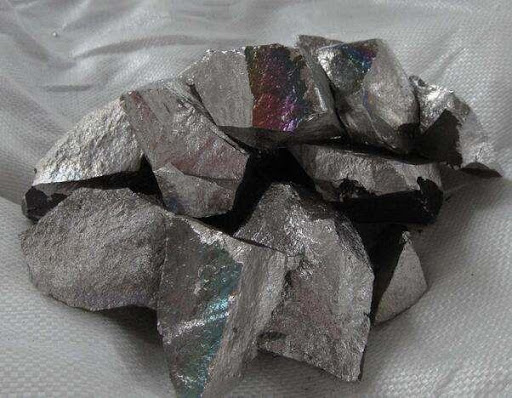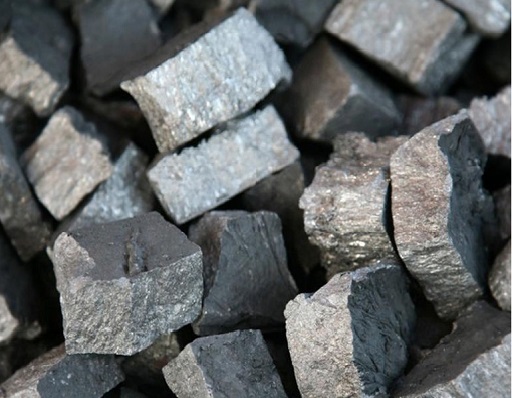4442 Graham Station Rd,
Letart WV 25253, USA
Tel.: 304-882-1181
Fax: 304-882-3853

FerroSilicoManganese (FeSiMn)
FerroSilicoManganese is an important deoxidizer, desulphurizer and alloying element that increases the tensile strength, toughness, stiffness, wear resistance and hardenability of steel, helping to improve the safety and effectiveness of the end product. Metallurgical consumers from a wide array of industries all require steel with precise chemical compositions and specific characteristics, and these clients rely on Felman Production to provide the raw materials needed for their diverse range of offerings.
|
FeSiMN ST |
|
|
Mn |
65 – 67 % |
|
Si |
16 – 18.5 % max |
|
C |
2.0 % max |
|
S |
0.04 % max |
|
P |
0.20 % max |
|
Size |
Per Customer Demand |
|
FeSiMN Hi |
|
|
Mn |
72 – 74 % |
|
Si |
16 – 18.5 % max |
|
C |
2.0 % max |
|
S |
0.04 % max |
|
P |
0.35 % max |
|
Size |
Per Customer Demand |

FerroManganese HC (HC FeMn)
Ferromanganese is used as deoxidiser, desulphuriser and degasser of steel, to eliminate nitrogen and other hazardous elements that are found at the first melting of iron. It also improves mechanical properties such as hardenability and abrasion resistance from special steels.
|
Mn |
74 % min |
|
Si |
4.0 % max |
|
C |
7.0 % max |
|
S |
0.03 % max |
|
P |
0.2 – 0.7 % max |
|
Size |
Per Customer Demand |

Silicomanganese Slag
Felman Production generates a residual commercial by-product, silicomanganese slag, through the production of Ferro Silicomanganese (FeSiMn). The slag is an inert solid green material consisting primarily of aluminum, manganese, magnesium, silicon, and calcium oxides.
Production
The slag is generated during the production of ferro silicomanganese using electric arc furnaces. The molten slag is casted, cooled by spraying it with cold water, and then crushed to the desired size.
Potential Uses
Potential uses of the commercial by-product include re-melt/reproduction, industrial fill, road base, textiles manufacturing, etc.

Chemical Composition
Below please find the available metals totals for the chemicals that were detected as components of the slag material. The material is considered non-hazardous as shown by Toxicity characteristic leaching procedure testing conducted on the material. A qualified and licensed environmental laboratory is currently conducting a general assay of the material to determine the % w/w of the different chemical components.
| TCLP Testing of Slag | ||
| Chemical | Slag Leachate | RCRA Hazardous Waste Limits |
| mg/L | mg/L | |
| Arsenic | ND | 5.0 |
| Barium | 0.85 | 100.0 |
| Cadmium | 0.0011 | 1.0 |
| Chromium | 0.02 | 5.0 |
| Lead | ND | 5.0 |
| Mercury | ND | 0.2 |
| Selenium | ND | 1.0 |
| Silver | ND | 5.0 |
| Slag Available Metals Totals | |
| Chemical | mg/kg |
| Aluminum | 88,900 |
| Barium | 5,590 |
| Calcium | 151,000 |
| Iron | 7,230 |
| Magnesium | 28,400 |
| Manganese | 85,000 |
| Potassium | 12,200J |
Physical Aspects of the Material
The material is a hard solid stone that has irregular fracturing similar to chert or glass. The material is primarily green, gray, and black in color and is odorless. The bulk density of the material is approximately 635 +/- 100 kg/m3.
Material Size: Generally, one-to-four-inch stone, but can be crushed and sized to the clients desired specifications.
Hygiene and Health Aspects
The full health and hygiene recommendations regarding this material is available on the product Safety Data Sheet (SDS) for Felman’s ferro silicomanganese slag. With use of the proper personal protective equipment and adhering to the intended use, proper handling, and storage in accordance with the SDS the product does not pose a threat to human health.
Storage and Handling
The material can be stored openly on any surface in uncovered piles as it is not likely to leach any chemicals of concern. Proper precautions should be taken to prevent the transport of fines from the material storage areas.
Transport/Delivery
The slag material is generally delivered in bulk by truck or barge.
